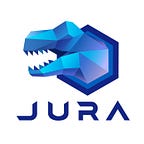Let’s talk about nodes!
In the blockchain system, we have a concept of nodes. A node is a device on a blockchain network, that is in essence the foundation of the technology, allowing it to function and survive. Based on the type of node you have, the node performs different operations.
We have two different types of nodes. The first one is a full node or a fully validated node. The second type of node we have is a partial node or a light node.
Full Node
So let’s talk about full node first. The full node is basically a computer which will have the entire blockchain. The full node is responsible for storing very large amounts of data. This full node has one more task: it verifies the blocks which are being added to the blockchain. So everytime there is a new block, the connected node will pass on the signal to the full node. The full node will then verify the entire blockchain and, once it verifies the node, it will store the block.
Partial Node
The second type of nodes are known as partial nodes or light nodes. For example, let’s say you want to use bitcoin or any wallet and you want to do that on your mobile phone. Of course, your mobile phone will need to have that software and interestingly, we will call it a node as well because the moment you install the software, your mobile phone becomes a node. But then this will be a partial node because it cannot simply download the enitre blockchain.
Nodes vs. Miners
Now in blockchain, we also have miners who are responsible of mining these blocks. How they do that is a discussion for some other time but a full node can also be a miner! Basically if a full node runs a mining software then we can call it a miner as well. It’s not necessarily true that a full node should also be a miner. These are two different things: a full node and a full node which is also a miner. To be a full node, you need a huge amount of storage whereas to be a miner, you need high computing power e.g. large volume of GPU.
You can try to be a node with your laptop but you can never mine with your laptop because it has a very low power. You need a huge amount of power. And to run that machine you need electricity as well. So that’s a huge investment but these miners get incentives. So whenever a miner mines a new block, they earn the transaction fee and a certain amount of bitcoin. Again, that’s only specific for bitcoin and not for miner-less blockchain systems. In short, you don’t need a huge investment but you do need large storage space to be a full node.
So in the end, you have a full-node that verifies transactions and a partial-node that simple is just a basic connector in the blockchain network.
Thank you for reading this article and supporting us. Hope you learnt something new. Don’t forget to like, share and clap for this.
‘Till next time.
— Join the Jura community to stay updated with the latest news:
· Get on our Telegram channel
· Follow us on Twitter, LinkedIn, and Reddit
· Read weekly articles on the Jura medium channel
· Telegram community in 한국 and Tiếng Việt,
· Instagram: juranetwork
For more information, visit jura.network
